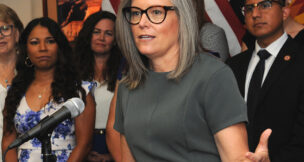Arizonans abundant at U.S. Department of Homeland Security
Jeremy Duda//May 22, 2009//[read_meter]
There are no saguaros growing on the banks of the Potomac, but Washington, D.C., is starting to look a lot like Phoenix — at least at the U.S. Department of...

















